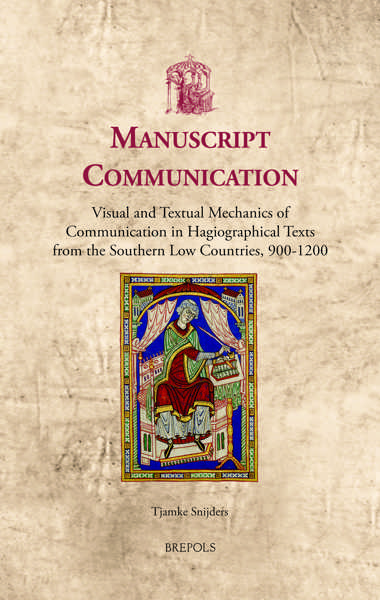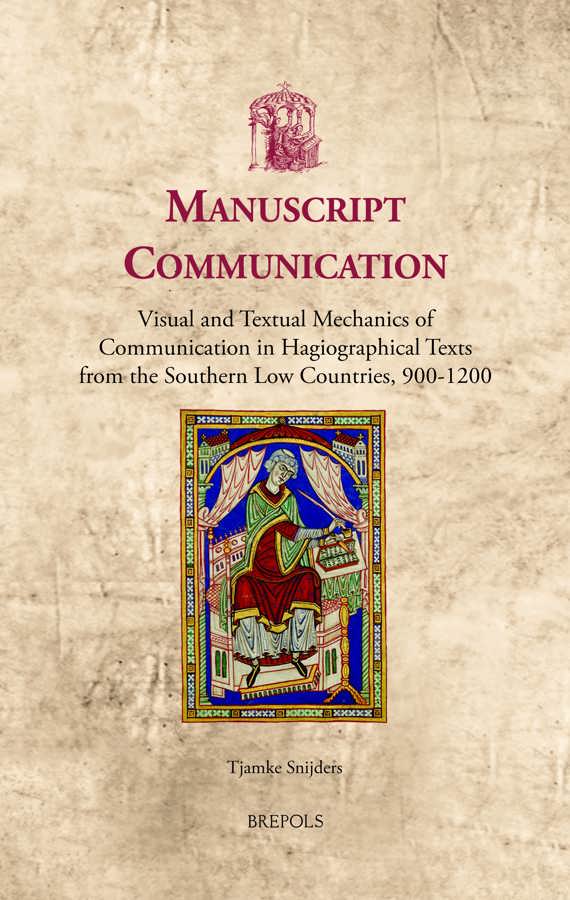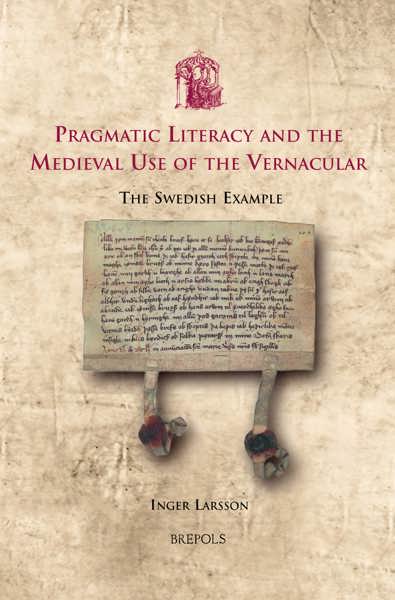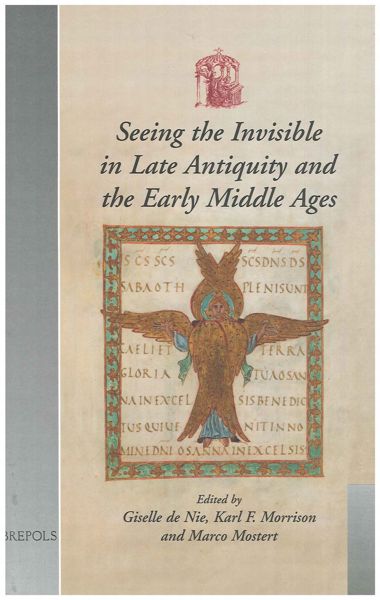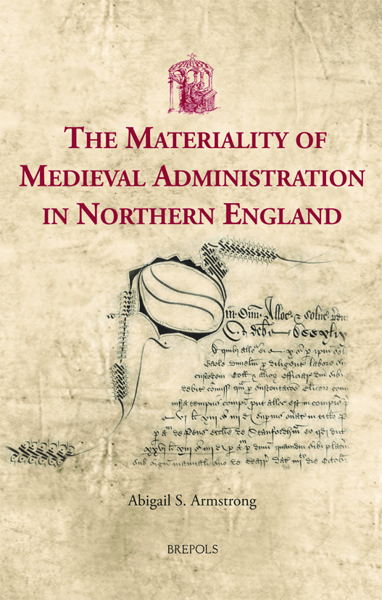
Manuscript Communication
Visual and Textual Mechanics of Communication in Hagiographical Texts from the Southern Low Countries, 900-1200
Tjamke Snijders
- Pages: 493 p.
- Size:156 x 234 mm
- Illustrations:24 b/w, 5 col., 38 tables b/w., 23 Graphs
- Language(s):English
- Publication Year:2014
- € 130,00 EXCL. VAT RETAIL PRICE
- ISBN: 978-2-503-55294-1
- Hardback
- Available
- € 130,00 EXCL. VAT RETAIL PRICE
- ISBN: 978-2-503-56042-7
- E-book
- Available
This book investigates how medieval abbeys in the Southern Low Countries used hagiographical manuscripts as a communicative tool.
“The theme of the book and the approach chosen provide significant interpretative potential for our understanding of both the role of hagiographical texts in the formation of medieval monastic identities and the manuscript context in which this materialized.” (Teemu Immonen, in The Medieval Review, 2016.09.15)
« T. Snijders livre donc là un ouvrage passionnant, remarquablement écrit, et dont la lecture ouvre des pistes de recherche innombrables pour une compréhension élargie de ce qu’est la communication médiévale. » (Vincent Debiais, dans Cahiers de Civilisation Médiévale, 240/60, 2017, p. 437)
“Thanks to the comprehensive structure of the book her outcomes based on profound knowledge of the material are easily approachable. Numerous tables, black-and-white figures, and five colour plates make her arguments still more accessible.” (Online review by ContactGroep Signum, 2018)
This study investigates how medieval abbeys in the Southern Low Countries used hagiographical manuscripts as a communicative tool. Four basic questions are addressed: How did layout influence a manuscript’s communicative potential? Was manuscript communication influenced by its composition? How did the flexibility of texts and manuscripts influence their communicative function? And how did the position of the monastery within the monastic landscape influence manuscript communication?
Ranging from in-depth case studies to discussions of structure and agency in manuscript terminology and layout in the aftermath of New Philology, this book argues that the High Middle Ages witnessed a fundamental process of manuscript diversification and specialisation, which was at the basis of the thirteenth-century revolution in manuscript layout. This led twelfth-century monks to start conceptualising the manuscript as an object with fixed contents, which was to be used and copied as a whole. Consequently, the production and spread of saints’ lives became part of a process of ideological homogenisation among Benedictine monasteries and started a crucial development in medieval literacy.
Awarded the Mgr. Charles De Clercq award from the Royal Flemish Academy of Belgium for Science and the Arts (2012) and the five-yearly Flemish Award for Historical Sciences of the Academische Stichting Leuven (2013).
Preface
Abbreviations
List of Figures and Plates
Chapter 1. Introduction
Part I
Chapter 2. Black Monks in the Southern Low Countries (900-1200)
The First Wave of Reforms (Late Ninth-Late Tenth Century)
The Second Wave of Reforms (Mid-Eleventh Century)
The Third Wave of Reforms (Late Eleventh and Early Twelfth
Century)
The Fourth Wave of Reforms (the Mid-Twelfth Century)
The End of the Twelfth Century
Conclusion
Chapter 3. Research Parameters for Manuscript Analysis
Manuscript Production
· Relations between Scriptoria
· Manuscript Layout between Structure and Agency
The Communicative Possibilities of Manuscript Layout
· Codicological Composition
· Manuscript Dimensions
· Legibility, Writing Intensity and Exploitation
· Tables of Contents
· Titles and Rubrics
· Use of Colours
· Initials
· Punctuation and Litterae Notabiliores
· Miniatures, Illustrations and Sketches
· Value
Conclusion
Part II
Chapter 4. The Layout of Hagiographical Manuscripts
The Scriptorium as Parameter for Manuscript Analysis
· The Utility of ‘House Styles’ for Manuscript Analysis
· Conclusion: The Scriptorium as Parameter?
A Diachronic Framework as Parameter for Manuscript Analysis
· The ‘Monastic Period’ and the ‘Revolution of the Twelfth Century’
· The Development of Surface Area and Exploitation
· The Development of Punctuation
· The Development of Initials and Use of Colours
· Conclusion: Diachronic Analysis as Parameter
Manuscript Genres as Parameter for Manuscript Analysis
· Libelli
· Lectionaries and Legendaries
The Monastic Library as Parameter of Manuscript Analysis
Conclusion
Chapter 5. The Composition of Hagiographical Manuscripts
The Audience of High Medieval Hagiography
The Composition and Functionality of Hagiographical Manuscripts
· Three Models for the Selection of Scripta for a Manuscript
· Shaping a Manuscript
· The Manuscript as a Narrative Unit
Case Study: The Development of St.-Ghislain’s Library
· Five Manuscripts from the Library of St.-Ghislain
· Why Were These Manuscripts Produced?
· Production Values
Conclusion
Chapter 6. Rewriting
Changing the Meaning of a Scriptum: Text
· Conceptualising a Quantitative Approach
· A Quantitative Approach: Some Preliminary Results
Changing the Meaning of a Scriptum: Illumination, Layout, and Paratext
· Reworking the Illumination of a Scriptum
· Reworking the Layout of a Scriptum
· Reworking the Codicological Setting of a Scriptum
· Reworking the Paratext of a Scriptum
Lachmannian Terminology and Its Problems
· Lachmannian Terminology
· From Work to Scriptum
· Towards a Reconceptualisation of the Work
Conclusion
Chapter 7. Contextualisation and Monastic Networks
Tenth-Century Networks (931-1007)
Mid Eleventh-Century Networks (1008-1075)
· Manuscripts in an Age of Reform
Late Eleventh-Century Networks (1075-1125)
· Cautious Supra-Regional Contacts
Twelfth-Century Networks (1125-1200)
· Organisational Influence of the Early Cistercians on the Southern Low Countries
· Manuscript Influence of the Early Cistercians on the Southern Low Countries
· Network Formation among Benedictines in the SouthernLow Countries
Conclusion
Part III
Chapter 8. Case Study: Marchiennes and Anchin
Manuscript Communication in the Marchiennes Reform (1024)
· The Construction of a Reform Manuscript
· Constructing a Library
Manuscript Identity in Anchin and Marchiennes
· Manuscripts and Identity in Anchin
· Identity Formation in Marchiennes
A New Way of Manuscript Transmission
· Copying Entire Manuscripts
· Comparing the Libraries of Anchin and Marchiennes
· A Growing Awareness of Genre
Conclusion
Chapter 9. Genre Consciousness and the Use of Hagiography
Developments in the Liturgy
· Did the Liturgy Influence Hagiography?
· The Development of Liturgical and Semi-Liturgical Manuscripts
The Developing Function of Hagiography within the Monastery
· Manuscripts with a Formal Ordering That Were Read Formally
· Manuscripts with a Narrative Ordering that Were Read Informally
· Manuscripts with a Narrative Ordering that Were Read Formally
A Diachronic Perspective
Conclusion
Chapter 10. Conclusion
Appendices
Glossary
Bibliography
Index of Manuscripts
General Index
Plates
